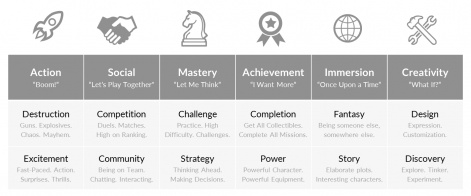Many have found that advertising strategies have had to shift in 2023 in order to adapt to changes in the mobile market. As we head into 2024 it’s essential to understand the new state of play, what works best and how to potentially boost your games revenue.
In this guest post, game design consultant at Unity, Anna Popereko, shares some top tips on how you can do this by optimising your ad placement by using data and understanding your users better.
There are several ways to increase the revenue of a mobile game. While it is wise to use a mix of strategies, LevelPlay data suggests that many developers heavily focus on optimising waterfalls while often neglecting more effective strategies, such as optimising the ad placement strategy, which can result in as much as a 400% jump in revenue growth.
Knowing why users are motivated to keep playing greatly impacts your ad placement strategy.Anna Popereko
Embrace the power of data
Always compare Key Performance Indicators (KPIs) against each other - be it engagement rate, impressions per daily engaged user (DEU), or whatever is essential to your game - rather than looking at them in isolation. When analysed in context, a data point can have a totally different interpretation. For example, a placement with a low engagement rate but high impressions per engaged user can indicate that players are finding the ad valuable. Still, the visibility or accessibility of the ad needs to be improved. Alternatively, a high engagement rate with low impressions per engaged user can indicate that the placement is right, but the rewards don’t meet user expectations.
Always look at the data in context to understand what it’s really telling you.
Understand user motivation
Knowing why users are motivated to keep playing greatly impacts your ad placement strategy. Quantic Foundry has created a user motivation model for apps, including mobile games, which breaks down users by what motivates them: action, social, mastery, achievement, immersion and creativity. Achievers, for example, will want everything on offer to them - all weapons, stars, vanity items, etc. Social players may enjoy competition or being on a team.

Every game has several types of players with different motivations, so it’s critical to know which players are playing your game and then to break down how that impacts your ad placement strategy. Knowing this will impact questions such as: what currency do they need the most? What currency do they spend the most? What do they need at any specific point in time? What are their long-term goals? How can you help to keep them interested?
You can tweak your ad placement strategy by identifying player motivation for greater impact. If a player motivated by achievement wants to acquire all of the collectibles and trophies in a game, for example, then your placement strategy may be to make a vanity item store with rewarded video gacha. If their motivation is to own the most powerful character and equipment, then suggest a placement that lets them try out that equipment through rewarded video. Know your users, know their motivation and adjust your ad placement strategy accordingly.
Learn from other games
It's always beneficial to play competitors’ games or games that are similar to yours and understand the factors contributing to their success. See how their user flow compares and what you can learn from them. How many placements do they have - is it more or less than your game? Where are the placements located in their game? Are they addressing the same user motivations as your game? If not, are you missing out on addressing the needs of a user segment? Compare and understand how the games differ and analyse where there’s room for improvement in your game.
Optimising your ad placement strategy can be daunting. But backed by research and taken in steps, it can have a much larger impact on your revenue than other more 'simple' optimisation strategies.Anna Popereko
Get inspired by other game genres
As well as looking at competitor games it can be super useful to learn from other genres. Find a game in a different genre with similar user motivations to your game, and draw inspiration from what they do differently.
Take an RPG or Strategy mobile game as an example. A game in those genres will normally have a story campaign that is level-based. The difficulty gradually increases with each level, and at some point, the player will most likely need to upgrade the characters to complete the levels. The primary motivation in these games is that of Power - the Achievement motivation to be strong, have the best team, the best characters, maximum upgrades, etc. But there’s an additional motivation of challenge - where the player wants to advance in the game and master the challenge that the level presents. Completing the level gives the player the satisfaction of completing a difficult task.
In Puzzle games, the audience may be different, but you can find players with similar motivations who have the same drive to complete a challenge. RPG and Strategy games can be inspired by Puzzle games and how they motivate their players to pass challenging levels. For example, they could include rewarded video placements that give additional energy or allow extra tries to complete a challenging level they keep on losing.
Optimising your ad placement strategy can be daunting. But backed by research and taken in steps, it can have a much larger impact on your revenue than other more 'simple' optimisation strategies.
Edited by Paige Cook






















